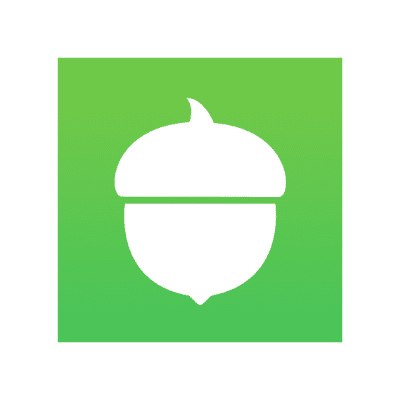How to Invest in Stocks With the Best Investment Apps

 Disclosure: We’re letting you know that this post contains sponsored links which The Smart Wallet receives compensation for, which may impact their order of appearance. This site doesn’t include all available offers.
Disclosure: We’re letting you know that this post contains sponsored links which The Smart Wallet receives compensation for, which may impact their order of appearance. This site doesn’t include all available offers.If you haven’t started investing yet, why not? It’s necessary to grow your money and build your wealth, and utilizing time is essential.
You don’t need to wait until you have “enough” money either because some of the best investment apps make it easy for everyone to invest immediately. You only need $1 to start!
Some people mistake day trading for investing, and they are two completely different methods. Day trading is extremely risky and involves buying/selling stock on the same day to attempt to earn a profit. Investing, when done correctly, is for the long term and can grow your money reliably based on your risk tolerance.
Here are some of the best investment apps to start, which include cryptocurrency as well:
Get $10 to Invest in Google, Amazon, Tesla, Netflix, and More
- You don’t have to be rich to start investing. And you can get a share of well-known brands like Google, Amazon, Tesla, etc.
- Stash, an investment app, lets you start investing with as little as $5
- Choose where to put your money and they provide guidance and tools to help you along the way
- Invest in major companies you regularly use and love!
- The Smart Portfolio option offers hands-off stress-free investing if you don’t want to think too much
- Bonus: Stash gives new members $10 for any first investment so create an account to get started!
Get $10 Welcome Bonus Now with Stash
Paid non-client endorsement. See Apple App Store and Google Play reviews. View important disclosures.
The Best Automated Investment App for Beginners
- Join the 13+ million customers already using Acorns
- Acorns Banking automatically saves and invests for you
- With every purchase on your new metal debit card, your spare change gets invested into an expert-designed, diversified portfolio of stocks and bonds
- Rated 4.7 ⭐ on the App Store
- Great for those who want to invest their money but don’t know where to start
- For a limited time, get a $20 bonus when you make your first investment!
Helpful Apps to Manage Your Money and Earn Extra Money
Investing is just one part of the bigger financial picture. It’s still necessary to understand how your money goes in/out, budgeting, saving, and earning extra cash for anything you might need it for. Even having a checking account that won’t charge overdrafts will save you money in the long run.
These are our favorite tools to help us do that:
| Chime® | A free, award-winning mobile financial app with no monthly fees, savings at 2.00% APY1, spots you up to $2003 when you need it, and you can get paid 2 days earlier4 with direct deposit. |
| Truebill | A free money management app that’s like your personal finance assistant, who finds all recurring bills and subscriptions, can help negotiate lower bills on your behalf, and will help you budget easily. |
| Steady | A free app where members on average earn an extra $5,500 a year! Securely link your bank account (read-only access) to track financial progress and explore money-making opportunities |
How to Get $750 This Week Into Your Bank Account
If you want to earn $750 this week to invest or use on anything else, you can utilize Flash Rewards. It’s a rewards program around since 2016 and has rewarded $12 million to members over time. The most popular way to receive money is directly to your bank account.
You have to follow the instructions carefully, limiting participants to once per year.
Flash Rewards work by showing you “deals” they think you would like. This includes mobile apps and games, subscriptions, financial services, etc. Each type of deal you choose has its mini-task to complete.
- Head over to Flash Rewards and fill out basic info (Email, Name, etc.)
- Take a quick Survey (it helps figure out the optional offers & required deals to recommend)
- Complete deals by shopping Flash Rewards’ great brand name partners.
- Important: Follow the instructions on completing the specific number of deals for each level and get to Level 5 to get the maximum reward! (there are plenty of deals to try – some are free trials or app downloads, others require a purchase!)
- Claim the reward and get it in about a week!
You won’t get your reward if you don’t complete the required amount of deals. Sure, it takes a little more effort, but it’s legit. Get your $750 to start investing with or spend on something you want!
Investing 101 Questions
Here are some frequently asked questions regarding investing and terms you may not know or need a refresher on.
How Does Investing Work?
Investing is one of the best ways to build your wealth and should be part of your overall financial planning. You can grow your money by utilizing time, and it’s best for mid to long-term goals, while saving is suitable for short-term goals and emergency funds.
Investment money gets put into stocks, bonds, or other assets with the expectation of turning a profit over years or decades. The earlier you invest, the better.
Before investing, it’s essential to know why you’re doing so. Goals can include buying a home, retiring comfortably, paying for a wedding, starting a family, etc. (You can pick more than one goal!)
Then know when you might need this money to determine what type of investing strategy you’ll need. With Stash, they’ll understand your goals first and offer guidance. They also provide stress-free investing if you don’t want to overthink and let them handle it all.
What’s the Difference Between a Stock and a Share?
“Stock” is a general term that means you own X number of shares in a company’s assets. “Shares” are like company ownership certificates that represent stock units.
For instance, if you have five shares of Apple, you have tech stock.
And you don’t need a lot of money to invest in Apple or other brand names either. You can do it easily with Stash, where new members can get a $10 bonus.
What is Risk Tolerance?
This means how comfortable you are with risk, and there are different levels at Conservative, Moderate, and Aggressive.
Since we never know how well a company can perform, their results will affect your money if you’ve invested in them.
A Conservative approach is less risky and is the “slow-and-steady” way. A Moderate approach gives balance to both risk and reward. An Aggressive approach means you’re willing to risk losing money to get potentially better and more profitable results. It’s essential to know how you feel about risk so that your investment portfolio can reflect your values.
What Are Fractional Shares?
If you think of one share as a whole pizza, you can think of a fractional share as a slice of the pie. When you can’t afford one whole share of a company, fractional shares make investing much more accessible, particularly in the companies you love.
Currently, one share of Google costs $2,781. A fractional share will let you invest in the company as low as $1.
The social-investing app Public has a robust and active community of financial experts, entrepreneurs, celebrities, and athletes. You can follow and get a first-hand look at what they’re investing in to help make your choices and start investing in fractional shares.
What’s a Mutual Fund?
It’s a professionally managed portfolio funded by many investors in stocks, bonds, and other securities. It lets you “pool” your money with other investors to “mutually” buy assets. Since the portfolio has a collection of companies within, a mutual fund offers diversification and lower risk.
Think of it as a group of people who pooled their money together to buy something that they wouldn’t have been able to afford on their own.
What’s an ETF?
An exchange-traded fund (ETF) is a basket of investments like stocks or bonds which can be traded on a stock exchange. It’s similar to mutual funds, but investing fees are typically lower as ETFs are designed to track the performance of specific indexes.
ETFs are more tax-efficient, give trading flexibility, portfolio diversification, and are lower cost. It’s an excellent option for long-term buy-and-hold investing.
Robinhood lets new investors trade stocks, ETFs, options, and cryptocurrency commission-free for just $1. Plus, new members get up to $225 in free stock.
What’s a Bond?
A bond is a loan from an investor (you) that a company or government borrows vs. a stock that gives partial ownership in a company. The borrower can use this money to fund their operations, and the investor will receive interest.
An example of a bond can include treasury bills, treasury notes, savings bonds, agency bonds, municipal, and more. Since bonds offer relatively predictable returns, they’re considered safer but perform differently than stocks, which provide higher returns.
Investors can buy bond-focused ETFs on Stash, which gives more flexibility than buying a single bond.
What is Cryptocurrency?
Cryptocurrency is a digital asset created with computer networking software. It’s a new medium of exchange that’s digital, encrypted, and decentralized, meaning it’s not regulated by a central bank, government, or other authority.
The technology behind crypto is the Blockchain, which consists of a chain of “blocks” containing digital records. It’s essentially a digital database and a public ledger. A new block is created and added to the chain when a block is complete, which can’t be changed or edited.
It was invented in 2008 and has become more mainstream to invest in. Coinbase is the most secure and one of the most established exchanges to buy & sell bitcoin and other cryptocurrencies, making it one of the best apps for crypto investing. It only takes $2 to start, and readers get a $5 bonus after making their first trade.
Can You Earn Interest in Cryptocurrency?
Investing has more long-term growth than plain savings, but cryptocurrency can be volatile.
But Gemini is a cryptocurrency exchange that lets you buy/store/sell bitcoin and crypto instantly. You can earn interest on your crypto (including stablecoins) by offering up to 8.05% APY on GUSD (Gemini Dollar).
How to Invest in Real Estate?
You may not have enough to buy a home right now, but you can still invest in real estate with REITs, also known as “real estate investment trusts.” There’s no need to manage properties either. The business model involves buying real estate and leasing those spaces to collect rent, particularly from Fortune 500 companies like CVS and FedEx. The rent generates income and is paid out to shareholders through dividends regularly.
HappyNest, a real estate investment app, lets you invest in their REIT with no platform or broker fees. You’ll earn passive income each quarter from the guaranteed rent coming from their tenants! It only takes $10 to start, and our readers get a $10 bonus on top. Investing in real estate also offers more stability and protection from typical stock market volatility.
Read More: How to Get $750 In Your Bank Account to Start Investing
Chime is a financial technology company, not a bank. Banking services and debit card provided by The Bancorp Bank N.A. or Stride Bank, N.A.; Members FDIC
1The Annual Percentage Yield (“APY”) for the Chime Savings Account is variable and may change at any time. The disclosed APY is accurate as of November 17, 2022. No minimum balance required. Must have $0.01 in savings to earn interest.
3Chime SpotMe is an optional service that requires a single deposit of $200 or more in qualifying direct deposits to the Chime Checking Account each month. All qualifying members will be allowed to overdraw their account up to $20 on debit card purchases and cash withdrawals initially, but may be later eligible for a higher limit of up to $200 or more based on member’s Chime Account history, direct deposit frequency and amount, spending activity and other risk-based factors. Your limit will be displayed to you within the Chime mobile app. You will receive notice of any changes to your limit. Your limit may change at any time, at Chime’s discretion. Although there are no overdraft fees, there may be out-of-network or third party fees associated with ATM transactions. SpotMe won’t cover non-debit card transactions, including ACH transfers, Pay Anyone transfers, or Chime Checkbook transactions. See Terms and Conditions.
4Early access to direct deposit funds depends on the timing of the submission of the payment file from the payer. We generally make these funds available on the day the payment file is received, which may be up to 2 days earlier than the scheduled payment date.
Some of the sponsored links that appear on this page are from companies that offer investment advisory services. They compensate us; for details on our compensation arrangements, please click here.











